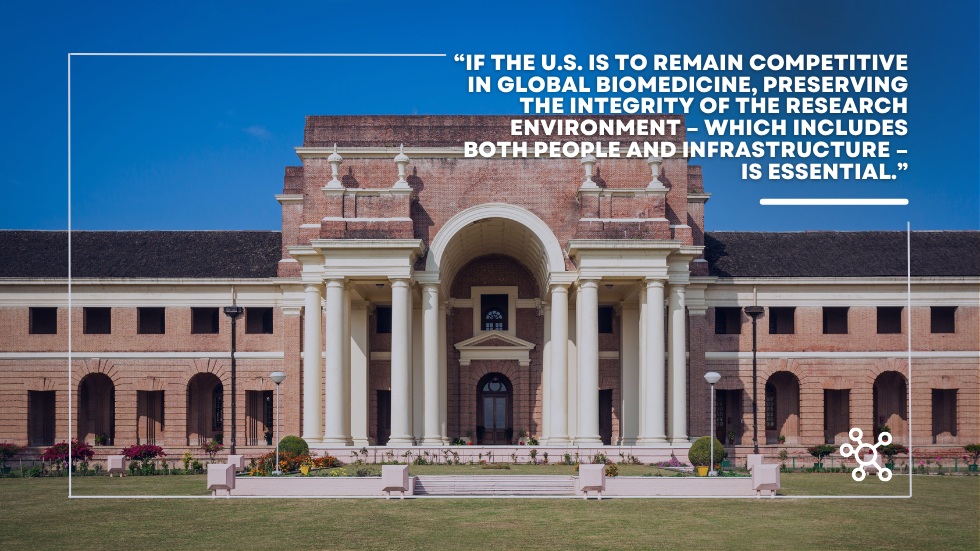Author: Tara Smylie
Picture this: You’re a biotech company on the cutting edge of innovation, racing against the clock to develop life-changing therapies and technologies. But there’s a problem lurking in the shadows – your internal talent acquisition function is crumbling under the weight of escalating costs, a scarcity of specialized training, and pressing time constraints.
Sound familiar? You’re not alone. In the fast-paced world of life sciences and biotech, many organizations’ internal talent acquisition processes are simply not keeping up with their recruitment needs. But fear not: in this blog post, we’ll explore the challenges plaguing internal talent acquisition teams – and uncover effective solutions to help you navigate the turbulent HR landscape of the modern day.
Internal Talent Acquisition in the Life Sciences: How’s it Going?
The life sciences and biotech industries are burgeoning with new discoveries and advancements. As a result, the demand for skilled professionals in such areas is soaring, and talent acquisition in these fields is struggling to keep up. In the face of fierce competition for top talent and rapidly evolving industry requirements, companies are facing an uphill battle to secure candidates that truly suit their needs.
Three Major Challenges to Internal HR Teams in 2024
Internal talent acquisition teams in the life sciences and biotech sectors are grappling with a myriad of challenges, including:
- Escalating Costs: Recruiting and hiring top talent can be a costly endeavor, particularly for specialized roles in the life sciences. Internal talent acquisition teams often find themselves burdened with rising expenses from sourcing, screening, and onboarding new candidates.
- Skills Shortages: Rapid technological advancements and shifting industry demands have created a skills gap, leaving internal recruiters scrambling to find candidates with the right expertise. Unfortunately, a shortage of qualified talent can impede organizational growth and innovation.
- Time Constraints: In a competitive job market, time is of the essence. Internal talent acquisition functions must contend with tight deadlines and high-pressure environments, leaving little room for error or delays in the recruitment process.
External Recruitment Agencies: to Use or Not to Use?
Amidst the many challenges to the modern internal hiring process, many life science and biotech companies are turning to external recruitment agencies. Here are some key benefits of partnering with an external agency:
- Specialized Expertise: External recruitment agencies have in-depth knowledge of the life sciences industry and its unique talent landscape. They can leverage this expertise to identify, attract, and secure top talent that aligns with your organization’s specific objectives.
- Broader Candidate Reach: External agencies have extensive networks and resources for sourcing candidates, both locally and globally. This broader reach allows them to tap into a diverse pool of talent, including passive candidates who are not actively seeking new opportunities.
- Cost Efficiency: Contrary to popular belief, partnering with an external recruitment agency can be a cost-effective solution. By outsourcing recruitment activities, companies can reduce overhead costs associated with internal hiring processes, such as advertising, screening, and training.
Keys to a Seamless Recruiting Experience
Given the mushrooming demand for talent in the life sciences and biotech fields and the increasingly complex STEM hiring landscape, internal talent acquisition teams are finding it challenging to keep up. The good news: by understanding these challenges and exploring effective responses, organizations can navigate the recruitment landscape with confidence. Whether it’s leveraging the expertise of external recruitment agencies or implementing innovative hiring strategies, investing in talent acquisition is essential for driving long-term success in an increasingly competitive market.
If you’re looking to fill a role with a highly qualified candidate, Sci.bio’s recruitment services can help. We know that no two clients are the same. So we provide customized recruiting support that adapts to a given client’s structure and needs and have placed successful candidates with a variety of companies. Please contact us to connect with a recruiter and discuss your needs, and follow us on LinkedIn to stay up to date.
Sources:
1. “The State of Talent Acquisition 2023” – Life Sciences Recruitment Report, Industry Insights, 2023.
2. “Navigating the Talent Crunch: Strategies for Recruiting in the Life Sciences Industry” – Biotech HR Trends, Talent Solutions, 2022.
3. “The Rise of External Recruitment Agencies in Life Sciences” – Recruitment Trends and Insights, Biotech Today, 2021.
4. “The Cost of Keeping a Position Open” – Talent Acquisition Insights, Sci.Bio, 2023.
Related Blogs:
● The Cost of Keeping a Position Open
● Struggling To Fill A Job Vacancy?
● A Researcher, a Communicator, or Something in Between? Knowing Who to Hire for Each Role





